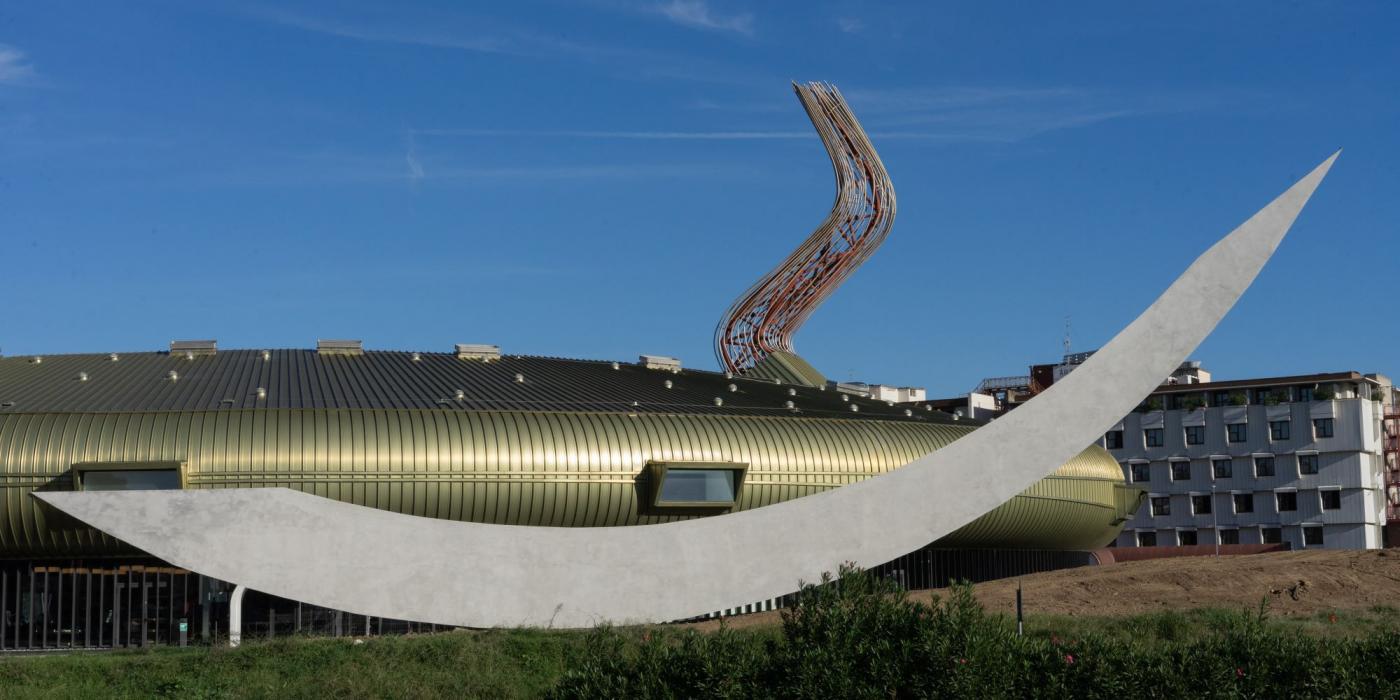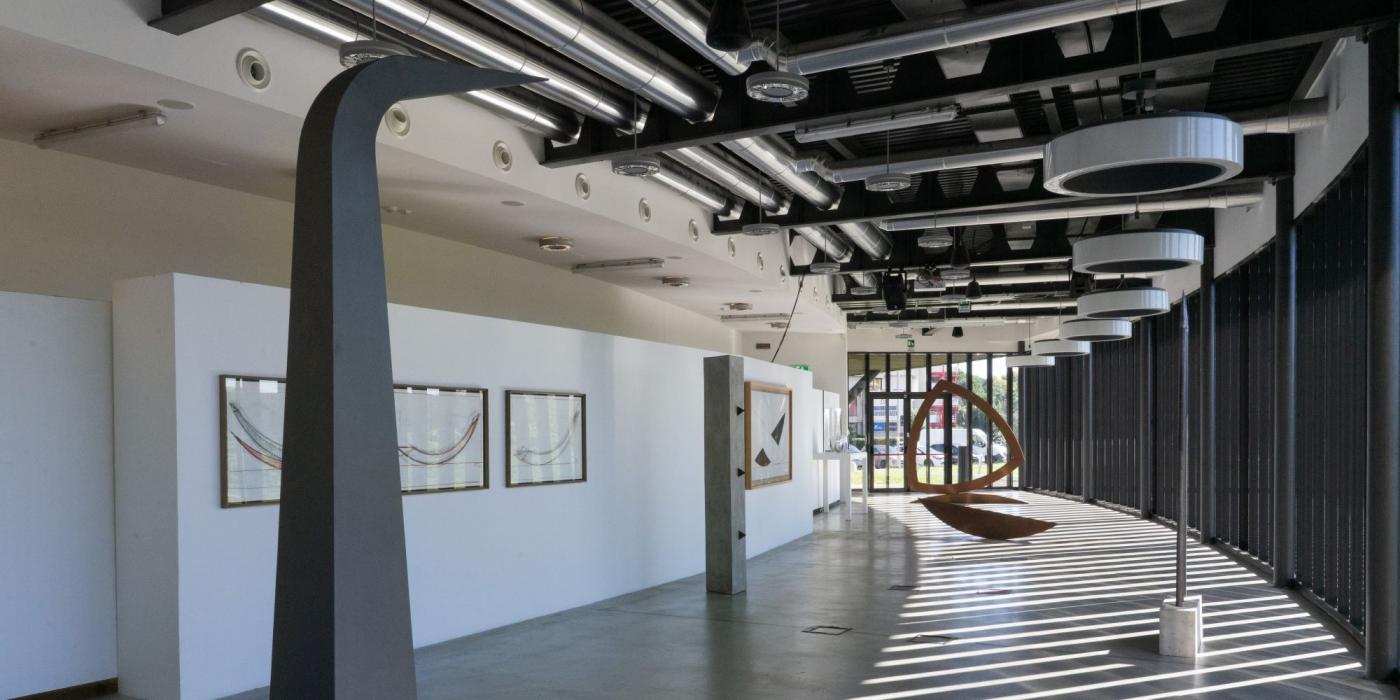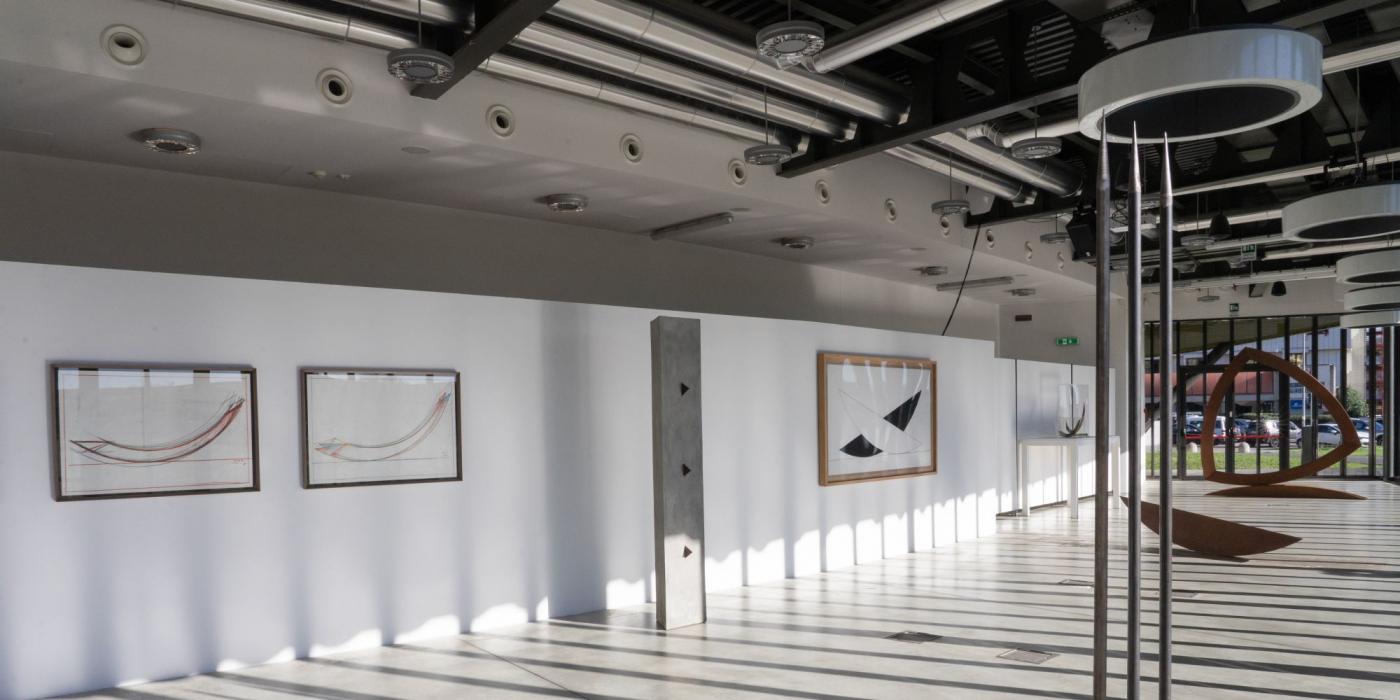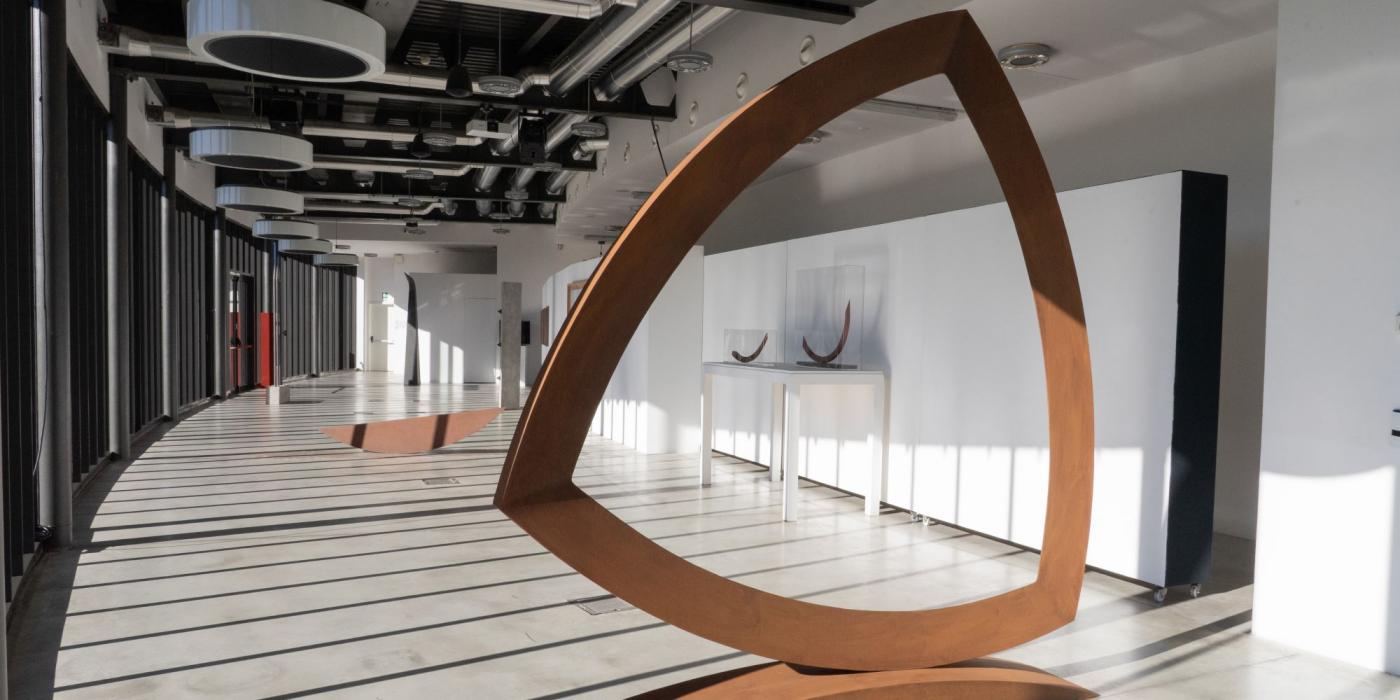Re-thinking Mauro Staccioli's Sculpture
After a long restoration, "Prato 88," a monumental work by Mauro Staccioli, also known as the "Crescent Moon," has been relocated to the square in front of the Center for Contemporary Art “Luigi Pecci”, in Prato.
On this occasion the exhibition "Rethinking Mauro Staccioli's Sculpture" was inaugurated and it will be open to the public until January 6, 2026.
The large sculpture Prato 88, conceived as an arch rising from the horizon, cutting its tail to the sky where its tip rises, is emblematic of Staccioli's poetics. The artist stated "to construct an idea like constructing a building; to think of the space of its material realization as an opportunity for interpretation and imaginative hypotheses of the environmental context".
This work remains a tangible and distinctive sign of the museum and of the contemporary artistic presence that has characterized the city of Prato for decades.
On display are original sketches and drawings related to the creation of Prato 88, which also reference Staccioli's contemporary interventions in the Seoul Olympic Park and for Documenta in Kassel in 1988; sculptures and drawings by the artist that anticipate or follow Prato's work.
The exhibition explores the main lines of Staccioli's artistic research, which begins with pointed sculptures in painted iron, concrete, and tubular elements from 1971, moving on to the balanced crescents designed or created in concrete or Corten steel in the early 1990s, and culminating in the drawn curvature and traversable geometric forms in Corten steel at the beginning of the new millennium.
On this occasion the exhibition "Rethinking Mauro Staccioli's Sculpture" was inaugurated and it will be open to the public until January 6, 2026.
The large sculpture Prato 88, conceived as an arch rising from the horizon, cutting its tail to the sky where its tip rises, is emblematic of Staccioli's poetics. The artist stated "to construct an idea like constructing a building; to think of the space of its material realization as an opportunity for interpretation and imaginative hypotheses of the environmental context".
This work remains a tangible and distinctive sign of the museum and of the contemporary artistic presence that has characterized the city of Prato for decades.
On display are original sketches and drawings related to the creation of Prato 88, which also reference Staccioli's contemporary interventions in the Seoul Olympic Park and for Documenta in Kassel in 1988; sculptures and drawings by the artist that anticipate or follow Prato's work.
The exhibition explores the main lines of Staccioli's artistic research, which begins with pointed sculptures in painted iron, concrete, and tubular elements from 1971, moving on to the balanced crescents designed or created in concrete or Corten steel in the early 1990s, and culminating in the drawn curvature and traversable geometric forms in Corten steel at the beginning of the new millennium.
Access notes:
Direct access from the ticket office and entry into the first available visit slot.
Photo gallery







